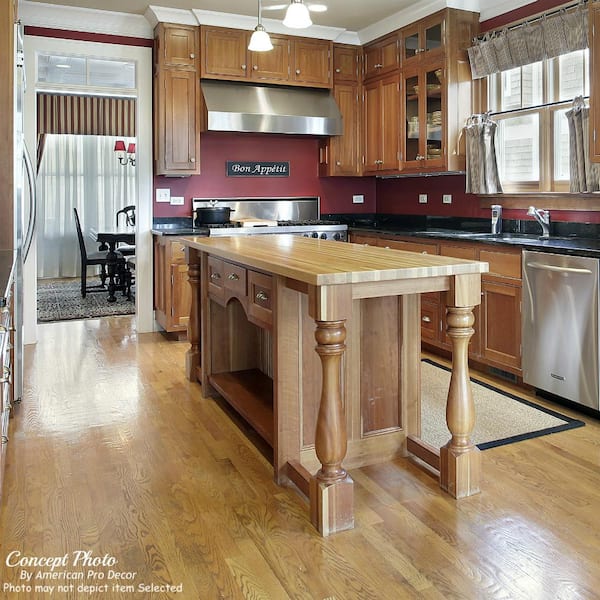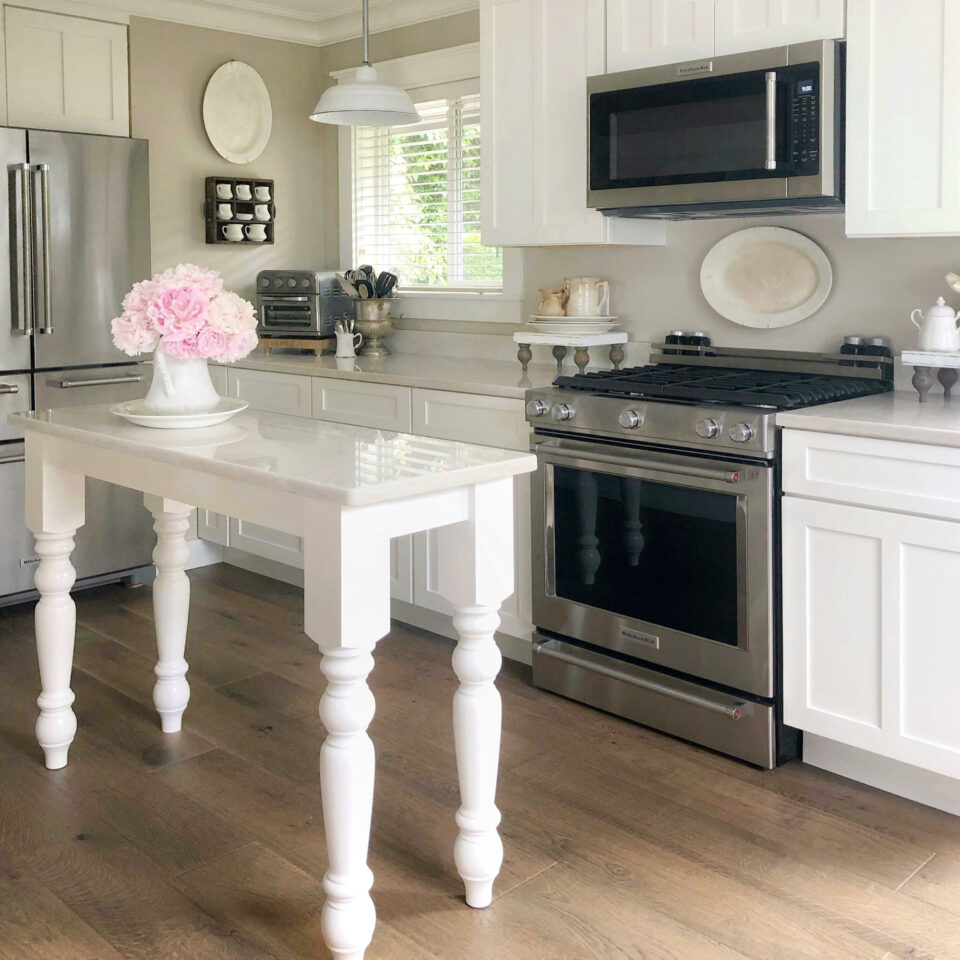One-of-a-kind Kitchen Island Legs for a Personalized Kitchen Look
One-of-a-kind Kitchen Island Legs for a Personalized Kitchen Look
Blog Article
A Guide to Picking the Perfect Kitchen Island for Your Home
Understanding your cooking area's spatial dynamics is the initial step, making sure that the island fits perfectly without interfering with the circulation. The option of products and surfaces additionally plays a vital duty in integrating the island with your kitchen area's overall layout.
Analyzing Your Space
Before picking a kitchen island, it is crucial to completely analyze your space to guarantee the addition will be both useful and aesthetically pleasing. Begin by determining the offered location, consisting of the size, size, and elevation of the kitchen. Accurate dimensions are vital to avoid acquiring an island that bewilders the room or one that is overmuch small.
Consider the existing layout and exactly how the island will certainly incorporate with the existing traffic flow. A well-placed island must not obstruct paths or hamper access to necessary appliances, such as the refrigerator, sink, and oven. Leave adequate clearance area-- normally around 36 to 48 inches on all sides-- to allow for comfortable movement and office efficiency.
Next, examine the all-natural light and sightlines within your kitchen. An island that blocks a window or interrupts aesthetic communication can make the space really feel cramped and dark. Consider how the island's positioning will impact lights and visibility, guaranteeing it improves as opposed to interferes with the kitchen area's atmosphere.
Figuring Out the Function
Determining the purpose of your kitchen island is an important action in guaranteeing it satisfies your certain demands and choices. Before delving right into design or size factors to consider, it is important to clarify what main function the island will offer in your kitchen area. Will it be a central hub for dish preparation, an informal eating area, or perhaps an extra storage solution?
In addition, enough counter area for slicing and mixing, along with obtainable storage space for kitchen area tools and ingredients, can change the island right into an effective workstation. On the other hand, if the island is meant to offer or help with social interactions as an eating area, seating arrangements come to be vital.

Selecting the Right Size
Picking the appropriate dimension for your kitchen area island is a balance of functionality and space optimization. An optimal kitchen area island should provide ample work space while making certain that motion around the kitchen area remains unblocked. Begin by gauging your kitchen area space; a minimal clearance of 36 to 42 inches around the island is needed to enable comfortable activity and ease of access.
The dimensions of the island should mirror its designated use. If the island will offer primarily as a prep area, a size of 24 to 36 inches could be enough. Nevertheless, if it is to accommodate seats, you should take why not look here into consideration a larger dimension, typically measuring at the very least 48 inches in width. Islands dedicated to devices or sinks might require extra room to house these features adequately.

Finally, make sure that the island's size matches the total kitchen format, preventing any frustrating presence that may interfere with the cooking area's aesthetic and energy - kitchen island legs. Careful preparation and precise dimensions will certainly assist you attain a reliable and harmonious cooking area environment
Deciding On Materials and Finishes
After determining the proper dimension for your kitchen island, the next action involves selecting suitable materials and surfaces. The option of materials substantially affects both the visual charm and performance of your kitchen area island. Popular products for counter tops include butcher, granite, and quartz block, each offering distinctive benefits.
In enhancement to the counter top, think about the materials for the island base. Solid timber supplies a timeless, strong look, while stainless steel offers a sleek, modern appearance and is very easy to tidy. Painted finishes can present a dash of shade, with choices ranging from muted pastels to strong, dynamic shades.
When selecting coatings, guarantee they complement the overall cooking area layout. Matte surfaces offer a modern feel, while glossy coatings can produce a polished, high-end appearance. Take notice of the sturdiness of finishes, specifically in high-traffic areas, to maintain the island's look in time. Picking the ideal materials and coatings will certainly improve both the capability and aesthetic allure of your kitchen area island.
Including Practical Attributes
Incorporating useful features into your cooking area island can considerably boost its utility and comfort, changing it into a flexible focal point of your kitchen. One crucial function to take into consideration is additional storage. Integrating closets, drawers, and open shelving can offer much-needed area for cookware, utensils, and little devices, aiding to maintain a clutter-free atmosphere.
An additional beneficial addition is a built-in sink or cooktop, which can enhance dish prep work and clean-up procedures. A sink can facilitate tasks such as washing veggies and cleansing recipes, while a cooktop can permit cooking directly on the island, cultivating an extra interactive and social cooking experience.
Think about integrating seating alternatives, particularly if your kitchen area functions as a casual eating location. Bar feceses or continue reading this integrated benches can transform the island into a multifunctional space for meals, homework, or casual gatherings.
Lastly, incorporating electric outlets right into your kitchen area island can improve its functionality. Outlets offer practical gain access to for little kitchen appliances, charging my company terminals for digital tools, and extra illumination choices.
Conclusion

Before selecting a kitchen area island, it is vital to thoroughly analyze your room to ensure the enhancement will certainly be both useful and cosmetically pleasing.Picking the ideal size for your kitchen island is a balance of functionality and room optimization. kitchen island legs. A perfect kitchen area island ought to offer ample workspace while ensuring that activity around the cooking area stays unobstructed.Incorporating useful attributes into your kitchen island can significantly boost its energy and benefit, transforming it right into a flexible centerpiece of your kitchen.In verdict, choosing the optimal kitchen island demands a complete evaluation of the available room, clearness concerning its main function, and mindful consideration of the ideal dimension and materials
Report this page